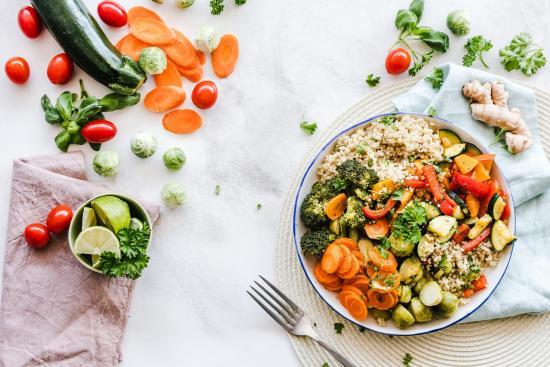Building a Six-Taste Bowl
Today it’s more important than ever before to keep our immune systems in balance! This is where my Six Taste Bowl comes in, from my book Eat Feel Fresh: A Contemporary Plant-Based Ayurvedic Cookbook.
When you consume a meal that contains the Ayurvedic six tastes, you are nourished from a cellular level. Each taste corresponds with different qualities, as well as macro and micronutrients, making you feel whole and balanced.
The reason fad diets don’t work is because they often skip out on the most essential taste—sweet—which leads you to crave unhealthy sources of sweet after meals (aka that tempting brownie at the coffee shop). By having a healthy source of sweet, like quinoa, root vegetables, or healthy fats, you won’t crave desserts afterward. Lunch is the time where your digestive fire, agni, is the highest, making it the best time to indulge in a Six Taste Bowl.
Customize your Six Taste Bowl for your primary dosha by including larger portions of the tastes that pacify it and smaller portions of the tastes that increase it. All six tastes should still be present, however. If you feel balanced, just consume the bowls as is.
- Vatas: Include more sweet, sour, and salty tastes. Decrease bitter, pungent, and astringent tastes.
- Pittas: Include more sweet, bitter, and astringent tastes. Decrease sour, salty, and pungent tastes.
- Kaphas: Include more bitter, pungent, and astringent tastes. Decrease sweet, sour, and salty tastes.
(Discover your dosha with the free quiz here.)
The Basic Components
Here are the basic ingredients for the Six Taste Bowl:
- Hearty Base: Cooked grains; roasted starchy vegetable
- Colorful Veggies: Variety of colors; steamed, roasted, or raw
- Plant Protein: Legumes, nuts, seeds
- Healthy Fats: Avocado, coconut, nuts/nut cheeses, dressings made with nut butters and plant-based oils
- Pungent Spices: Turmeric, cumin, and classical Ayurvedic spices; optional onion/garlic
- Tasteful Garnishes: Fresh herbs and microgreens; sprinkle of sea salt; squeeze of lime




















